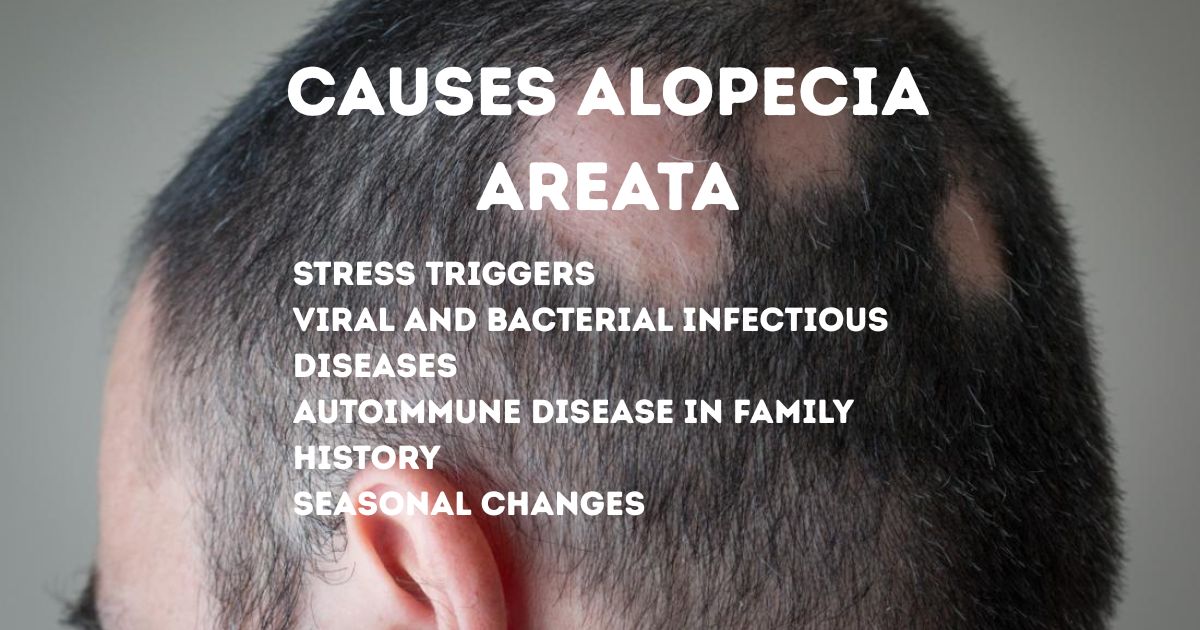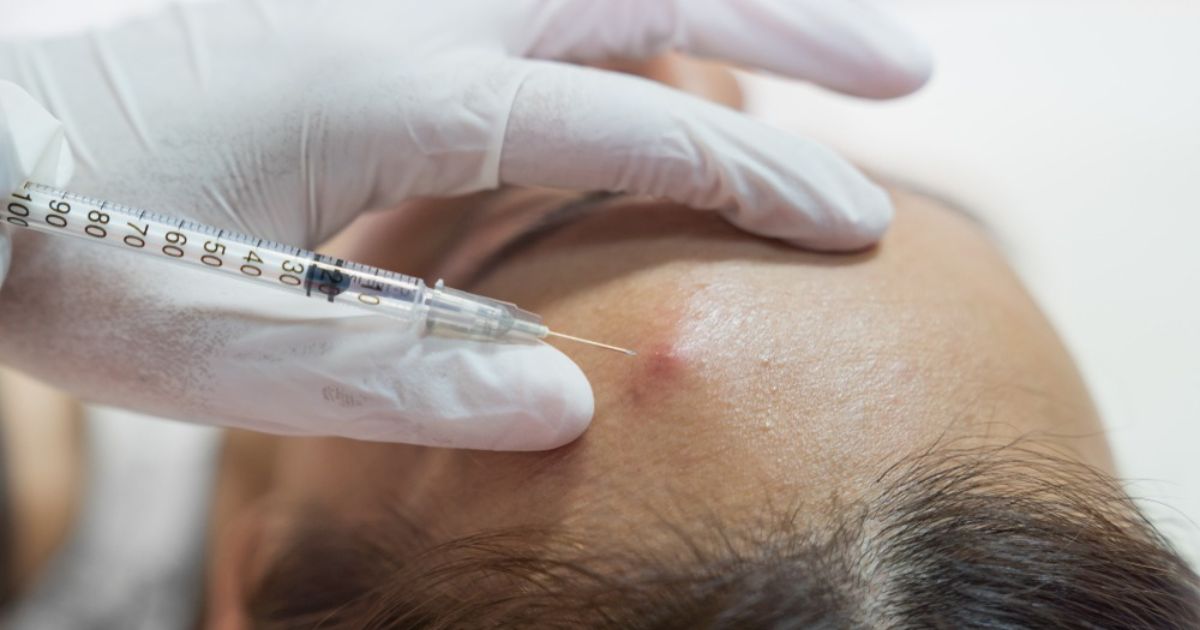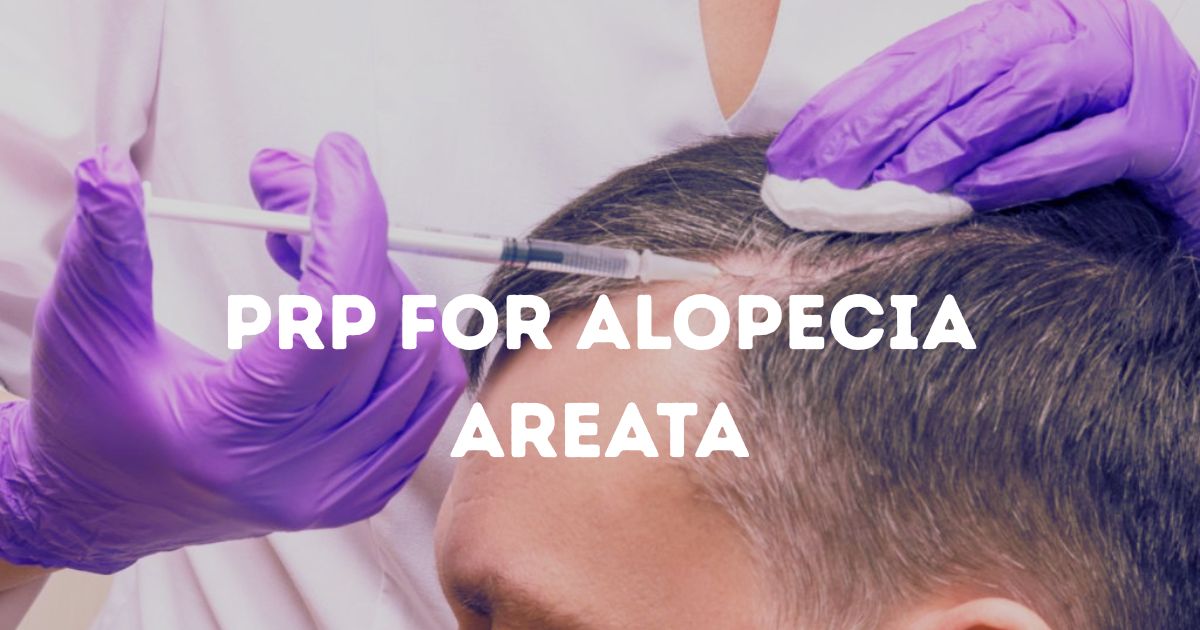Handling alopecia areata may be a stressful event particularly when you discover new patches of loss of hair. It is an autoimmune disease, which attacks the hair follicles resulting in the formation of bald spots. The good news? This process can be slowed down and even prevented in an effective way. There are various ways on how you can save your hair, starting with medical remedies such as injections of corticosteroids to the simplest of lifestyle changes. This guide will offer all the information on how to keep alopecia without spreading and to grow back hair in a healthier state.
KNOWING ALOPECIA AREATA AND ITS SPREAD
Unless you have never observed patchy hair loss, which suddenly appears, you may have come across alopecia areata. It is an autoimmune condition in which the immune system attacks the hair follicles inaccurately which leads to the inhibition of hair production. The NIH states that more than 6.8 million people in America have some form of alopecia areata. Even though there are those individuals who only experience small bald spots, there are those who have more serious cases such as alopecia totalis or alopecia universalis. The most important thing is to understand the reasons behind its spread, untreated flare-ups may develop several small spots into massive loss, and timely detection and treatment is of great importance.
ALOPECIA AREATA TRIGGERS AND RISK FACTORS

It is imperative that you learn what aggravates alopecia areata in case you wish to prevent the disease. Although the actual cause is still thought to be an autoimmune disease reaction, there are a number of external and internal conditions that may hasten hair loss. Early recognition of these triggers will hopefully allow you to make efforts to prevent damage to your hair follicles and delay development progression before it causes alopecia totalis or alopecia universalis.
Stress Triggers
One of the most effective triggers of alopecia exacerbations is stress. Stress, either emotional or physical, leads to hormonal changes, especially a higher secretion of cortisol that can interfere with the normal history of hair growth. Patchy loss of hair is a common complaint that people may report following traumatic experiences, some very serious illness or even a long period of anxiety. Mindfulness and exercise are practices in stress management that are necessary to minimize recurrence.
Viral and Bacterial infectious diseases
Diseases may upset the immune system making it overreact and attack the normal cells. Alopecia has been reported as a result of viral infection by influenza, COVID-19, or even common cold. This hyperirritability of immunity may lead to one finding bald spots in a few weeks after recovery. Medical examination and treatment of the condition can help to avoid mass loss.
Hormonal Imbalance
Hormonal changes have a direct influence on hair growth. Alopecia is usually aggravated by such conditions as thyroid disease, PCOS, or postpartum hormonal changes. The decrease of estrogen or thyroid hormones causes the immune system to be more active and causes inflammation of the hair follicles. These imbalances can be diagnosed using blood tests to be treated on a case-by-case basis.
Autoimmune Disease in Family History
To a great extent, genetics is related to alopecia areata. You are at risk of having an autoimmune disease if there is a history of this disease in your family, including lupus, vitiligo, or type 1 diabetes. Research has revealed that as many as 20 percent of patients with alopecia have a family history of autoimmune disease and hence it is a significant risk factor that you need to consult your physician about.
Environmental Factor and Allergens
The immune system can be activated by exposure to environmental irritants such as dust, mold or chemical pollutants. This can lead to inflammation in sensitive individuals which is a contributing factor to exacerbation and remission. This can be mitigated by avoiding harsh chemicals in hair product and improving the quality of the air in the house.
Seasonal Changes
A lot of shedding is observed in spring and the fall. These seasonal changes influence the level of vitamin D, immune system, and even the level of scalp hydration. Covering your head with a hat and adding vitamin D in the winter could be good to make the symptoms even.
Pre-emptive symptoms of Alopecia Areata
The sooner you are able to identify the symptoms the sooner you are able to respond. Seek small and bald spots on the scalp or beard which appear abruptly. There are individuals who observe nail pitting or nail ridges before they experience loss of hair. Early warning can be in the form of tingling or itching in a spot. To help in diagnosis and eliminate other causes of hair loss, dermatologists usually do a scalp biopsy. The sooner it is done, the less hair will be lost.
SCALP CARE AND EVERYDAY HABITS TO PREVENT A SLIGHTEST HAIR LOSS
Your day-to-day living is not that trivial. Shampoo softly, do not have tight hair styles that tug at the scalp and use hot hair-dressing tools sparingly. Hats or sunscreen can be used to protect the scalp against sunlight to avoid damage to the follicles. Follicles and the scalp are kept clean and in good condition to re-grow.
THE BEST MEDICAL TREATMENT THAT COULD BE USED TO CONTROL THE SPREAD OF ALOPECIA AREATA
Alopecia areata is frequently a life-long condition that must be halted by health care professionals. Since it is an autoimmune disease, the immune system has to be relaxed to enable the hair follicles to heal. Therapies used by dermatologists combine therapies depending on the severity of the condition. Early action will assist in preventing patchy loss of hair to develop to alopecia totalis or alopecia universalis and also improve the likelihood of full recovery of hair following treatment.
Corticosteroid Injections
Corticosteroid injections are thought of as the gold standard in the treatment of small bald patches and they are effective by decreasing inflammation around the hair follicle. These are delivered at every 46 weeks and in most patients, growth is visible after 68 weeks. This method is most appropriate in mild to moderately severe cases and has side effects with the least systemic effect when compared to oral steroids.

Topical Corticosteroids
Topical corticosteroid may be used in the form of creams, foams, or lots to those who dislike injections or have several patches. They assist in stimulating the local immune response and in repressing the local growth. Dermatologists usually use topical steroids with other interventions such as minoxidil to enhance treatment.
JAK Inhibitors
The most recent advancement in the treatment of alopecia is JAK inhibitors including baricitinib and ritlecitinib. These are oral drugs that inhibit certain immune effects that destroy hair follicles. Approved FDA in the U.S. to treat severe cases of alopecia areata they have demonstrated important growth in between 30-40% of patients in clinical trials. This treatment is life-changing in most cases, although regular observation is required to control the possible side effects.
Topical Immunotherapy
In resistant or chronic cases, dermatologists can apply topical immunotherapy agents such as diphencyprone (DPCP) with the intention of inducing mild allergic reaction on the head. This distracts the immune system permitting hair to grow. This method is effective in large regions of loss although it would require some time, in many cases, numerous months.
Phototherapy (Light Therapy)
Phototherapy involves application of ultraviolet (UV) radiation under controlled circumstances to control immune response in the head. Topical or oral interventions are normally added to it to ensure the maximum effect. The sessions are undertaken in a clinical environment and it can take weeks or months to achieve results.
Combination Therapy
Treatments now are more recommended by many dermatologists in combination to achieve faster and prolonged regrowth. To illustrate, minoxidil used in combination with corticosteroid injections or JAK inhibitors in combination with topical therapy may decrease the recovery duration and decreases the chances of relapse.
FOOD IDEAS AND VITAMINS TO PROMOTE HAIR GROWTH

Dietary support is a significant part of diet support towards hair. Strong follicles are required to have nutrients such as biotin, zinc, and vitamin D. In my opinion, the main factors of regrowth should be vitamin D and zinc. It has been found that as many as one out of every three alopecia patients is deficient in vitamin D, so supplementation is significant. Naturally use foods such as salmon, eggs, spinach and nuts.
| Nutrient | Food Sources | Role in Hair Growth |
| Biotin | Nuts, eggs | Make hair shaft stronger |
| Vitamin D | Salmon, fortified milk | Improves follicle activity |
| Zinc | Pumpkin seeds, legumes | Helps in boosting the immune system |
| Omega-3 | Flaxseeds and fish | reduce inflammation |
TECHNIQUES OF STRESS MANAGEMENT TO REDUCE FLARE-UPS
Autoimmune disease is a disease that is often driven by stress. Mindfulness meditation, journaling and CBT therapy can be used to calm the nervous system and reduce cortisol. My stress-related flare-ups in my case greatly decreased with the help of mindfulness meditation. Exercise circulates better and enhances emotional stability. Alopecia areata can be prevented by making stress control a habit, which is very easy but powerful to prevent the progression of the ailment.
NATURAL REMEDIES AND CHANGES OF LIFESTYLE THAT COULD HELP
When combined with healthy habits, medical prescriptions are effective. The natural methods of supporting your scalp may help in the recovery process and also prevent the formation of new patches of hair loss. Stress management to the loss of hair, gentle care, and the support of nutrients can provide a superior environment in which the hair regrowth treatments can be effective.
Scalp Essential Oils Massage
Scalp massages using rosemary oil, peppermint oil, or lavender oil can help to increase the blood flow and stimulate hair growth. There is a limited number of small research studies which indicate that rosemary oil can be used as an effective alternative to minoxidil in minor cases. I think that regular massage 3 times a week can be used to keep the scalp healthy and enhance the outcomes of medical therapy.
Stress Reduction Practices
Since it is known that stress factors can aggravate the exacerbation of alopecia areata, yoga, meditation, tai chi, or simply mindful walking can ensure that the level of cortisol stays within normal limits. Reduced stress can be translated to the reduction of shedding and reduced recovery between remission cycles.
Gentle Hair and Scalp Care
Irritation can be prevented by switching to a mild shampoo, not using aggressive chemical dyes, and not using tight hairstyles such as braids or ponytails. This is useful in safeguarding the delicate regions and the regeneration of those areas takes place without disturbances.
Prevention of Toxins and Allergens
Immunity can be maintained by limiting the exposure to allergens, cigarette smoke, and environmental toxins. Removing the usual allergens such as nickel or some hair products can curb the inflammation of the scalp in some humans.
Diet and Lifestyle Support
The difference can be done by taking a balanced diet rich in vitamins D, E, zinc, and iron. With these together with lifestyle changes like exercise and good sleep, the natural means of regrowing hair will have the best premise.
ADVANCEMENTS PHYTHERAL PLATELET-RICH PLASMA (PRP), CORTICOSTEROID INJECTION AND TOPICAL IMMUNOTHERAPY
The advanced therapies might be game-changers when the basic treatments are insufficient. Platelet-rich plasma (PRP) involves the use of growth factors of your own blood to activate sleepy follicles. DPCP topical immunotherapy may be used to re-educate the immune system to prevent hair attack. PRP, corticosteroid injections, and oral medications should be combined to achieve improved results in recalcitrant ones.

ALOPECIA AREATA PREVENTION: BIO-REHABILITATION TO RETURNING ALOPECIA AREATA
Alopecia may recur even in case of regrowth. To ensure that it does not happen again, use maintenance medicines which your dermatologist prescribes to you. Follow-ups after every few months can be used to monitor progress and make adjustments to the therapy in case new spots develop. The journal of stress, diet, and symptoms can help to identify patterns that lead to the flare-ups.
WHEN A DERMATOLOGIST OR A HAIR LOSS SPECIALIST SHOULD BE VISITED
When the loss of hair is rapid, and when it involves many sites or you lose eyebrows or eyelashes then you should consult an expert. In case you do not notice hair growth during a course of treatment in half a year, a dermatologist will be able to conduct additional tests and recommend more advanced methods. The early intervention provides the greatest opportunity of complete recovery.
CONCLUSION
There are no known predictors of alopecia areata though there are different instances where individuals are known to regrow their hair. Support groups like NAAF are used to offer advice and support. Wigs and hairpieces, microblading also come in handy. With emotional support and therapy, it is easier to cope to such an extent that even a flare-up can be overcome.
FAQs
Q1: How can you naturally stop alopecia areata?
The natural treatment involves stress management, applying of essential oils on the head, application of soft shampoo on the head and supplementing the diet with vitamin D, zinc and biotin.
Q2: Can alopecia areata stop on its own?
Yes and there are situations when the hair grows up even without the treatment. However, the initial treatment of the medical response has more positive outcomes and avoids the alopecia totalis or alopecia universalis.
Q3: What are the best the treatment of alopecia areata?
The corticosteroid injections, topical corticosteroids, JAK inhibitors, topical immunotherapy and platelet-rich plasma (PRP) therapy are the most effective ones.
Q4: What causes alopecia areata?
They include stress, hormonal imbalance, family autoimmune disease, change of the season and infections. The reoccurrence is discouraged by the stimuli in monitoring.
Q5: When did the alopecia areata take place with respect to visiting a dermatologist?
Consult a dermatologist, should the loss of hair be precipitate, extensive, eyebrows and eyelashes also involved or you would not be improved after six months.

 Medically reviewed by
Medically reviewed by